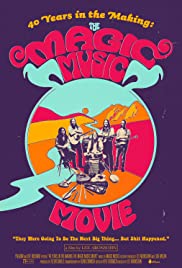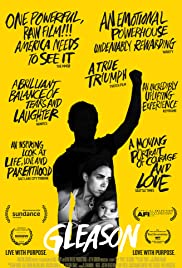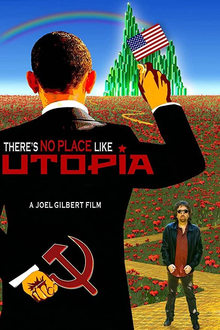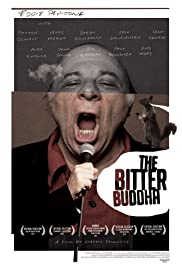
This documentary takes audiences into the heart of Africa’s Congo Basin to meet the men and women trying to save the forest elephant from extinction.
You May Also Like

TV writer/producer Lee Aronsohn tracks down the scattered members of a beloved early 1970’s band with the hope that, 40 years after they broke up, he can get them to play one last show.

At the age of 34, former New Orleans Saints defensive back Steve Gleason was diagnosed with ALS and given a life expectancy of two to five years. Weeks later, Gleason found out his wife, Michel, was expecting their first child. A video journal that began as a gift for his unborn son expands to chronicle Steve’s determination to get his relationships in order, build a foundation to provide other ALS patients with purpose, and adapt to his declining physical condition—utilizing medical technologies that offer the means to live as fully as possible.

Why did Dorothy follow the yellow brick road? Film maker Joel Gilbert journeys across America to find out what’s at the end of the Progressive rainbow – Utopia or something far worse? From the ruins of Detroit to the slums of Chicago’s South Side, and from Denver’s illegal immigration invasion to Newark’s urban removal project, Gilbert pulls back the curtain. He confronts Progressives on his quest, and takes us deep into their political fantasy of paradise on earth. There’s No Place Like Utopia is a humorous and horrifying exploration of Progressivism, amnesty for illegals, race relations, Islam in America, political correctness, and Barack Obama himself, who promises to “remake the world as it should be.” But is Utopia a real destination for America? Or, does the true path to happiness still remain faith, family, and hard work – back home in Kansas?

The Documentary takes an unconventional journey through the life of one of America’s most original comedic voices. Eddie Pepitone, “The Bitter Buddha”, is looked at in this portrait of creativity, enlightenment and rage.

Dinosaurs died out 65 million years ago and we have hardly ever found a complete skeleton. So how do we turn a pile of broken bones into a dinosaur exhibit? Dr Alice Roberts finds out how the experts put skeletons back together, with muscles, accurate postures, and even – in some cases – the correct skin color. Here’s a conundrum. Most dinosaur skeletons are incomplete, so how do you create museum exhibits that are realistic? As Dr Alice Roberts discovers, it’s a practical question for those putting together an exhibition at LA County’s Natural History Museum, who have to design dynamic, punter-pleasing displays that also reflect the latest thinking in paleontology circles.

At the epicenter of the 1990s ecstasy drug trade in Arizona sits an unusual rivalry. English stockbroker Shaun Attwood faces off against Gerard Gravano, the son of notorious New York mobster and hitman Salvatore “Sammy the Bull” Gravano.

A documentary of the first successful expedition to the summit of Mount Everest. New Zealand’s Edmund Hillary and Sherpa Tenzing Norgay climb Mount Everest in 1953.

Untangling the web of cultural and historical ties underlying Japan’s deep fascination with insects.

Documentary about the dancer Rudolf Nureyev.

Hull, England, 1970. In a run-down commune in a tough port city, a group of social misfits – mostly working class, mostly self-educated – adopted new identities and began making simple street theater under the name COUM Transmissions. Their playful performances gradually gave way to work that dealt openly with sex, pornography, and violence. COUM lived on the edges of society, surviving on meager resources, finding fellowship with others marginalized by the mainstream. At the core of the group were two artists, Genesis P-Orridge and Cosey Fanni Tutti. As their work evolved, Cosey embarked on a career modeling for pornographic magazines, which she claimed for herself as a conceptual artwork, using it to forge a specific position in relationship to 1970s feminism. In performances, Genesis pushed himself to extremes, testing the limits of the human body.

In the sixth installment of the Criterion Channel’s Meet the Filmmakers series, director Alex Ross Perry (Her Smell, Listen Up Philip) visits the ever-iconoclastic auteur Paul Schrader during the making of his 2017 masterpiece First Reformed. On set and at home- where, for his own pleasure, he continues to work and rework his previous films- Schrader reflects on the highs and lows of his legendary career, the challenges and rewards of slow cinema, and the influences and experiences that continue to shape his approach to filmmaking. With this insightful portrait of one of his filmmaking heroes, Perry captures an artist who is continually at play, intentionally provocative, and never less than vital.